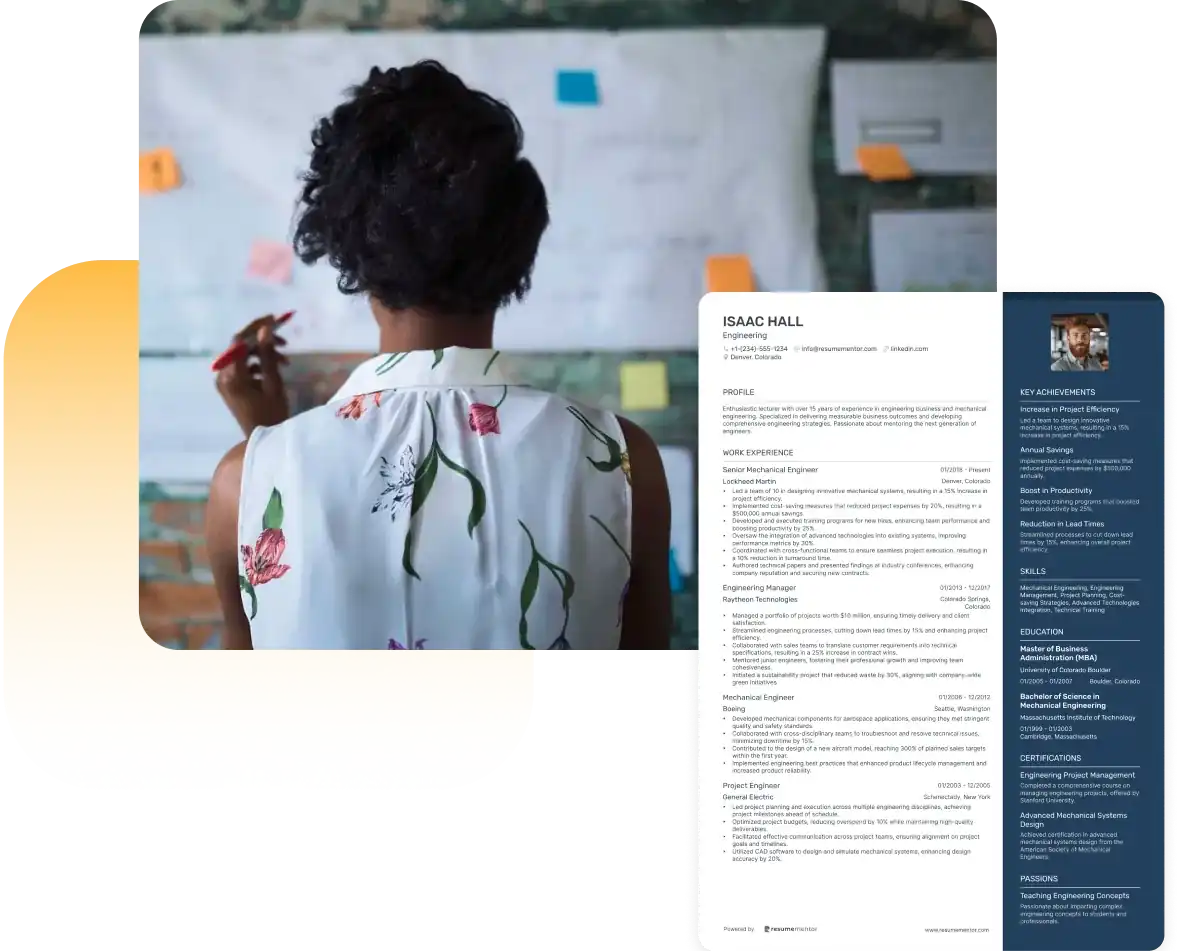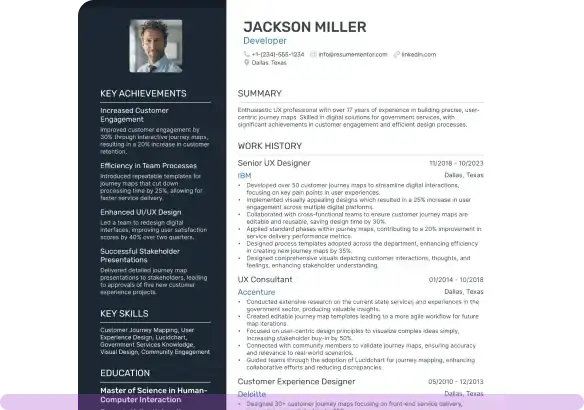How to Showcase Achievements on Your Resume to Stand Out

Nov 22, 2024
|
12 min read
Because there’s nothing wrong with tooting your own horn now and again!
Listing achievements on your resume highlights your professional value. After all, there’s no better indicator of the future than the past. If you can show the hiring manager what you’ve achieved in the previous roles, they’ll have a good idea of what you can do in your next role. But how do you get it right?
Naturally weaving your top achievements through your resume is the answer. In the following guide, we’ll be looking at the type of accomplishments you should include, how to list them, and the best way to make them stand out from the crowd.
Key takeaways
- Writing achievements on your resume is a simple way to boost your chances of success. It shows hiring managers what you bring to the table.
- Quantify your resume achievements whenever possible, by adding facts, numbers, and statistics. These metrics make a big impact.
- Give your achievements context using the straightforward ATR (Action + Task + Result) approach.
Why are achievements important on a resume?
First up, let’s talk about why having achievements on your resume is a must. If you want to elevate your resume and catch the hiring manager’s eye, adding these into the mix is the way to go.
Let’s break down the main benefits here.
Benefits of achievements on a resume
- Highlight professional skills and growth: Adding achievements to your resume details your professional development. When done well, you can craft a narrative that effectively conveys your growth over your employment history.
- Illustrate your value to employers: When a hiring manager reads your resume, they’ll ask one question: “What value do you bring?” Answer that by adding achievements that are backed up by facts and statistics.
- Align with the role: Every vacancy has a specific set of demands or criteria. By including the right achievements on your resume, you can show the hiring manager that you have what it takes to succeed. Remember, it’s always important to tailor your application to the role or company you’re applying to.
- Set yourself apart from the crowd: The job-hunting world is highly competitive. When applying for roles, your number one priority should always be standing out from the other applicants. One way to do that is to list a wealth of high-value achievements throughout your resume.
Failing to include achievements on your resume is a real mistake. Sharing the right accomplishments will make you unique, pique the hiring manager’s interest, and get you noticed for the right reasons.
Is your resume good enough?
Drop your resume here or choose a file.
PDF & DOCX only. Max 2MB file size.
Where should you place achievements on a resume?
Now you understand the importance of having achievements on your resume, but where should you put them? There’s more than one right answer. To properly highlight your many accolades, you need to weave them through various resume sections. Let’s, look at the main options you have.
Summary section
At the top of your resume, you’ll find your Summary section. This is a short paragraph that explains what they can expect from you. Including achievements is a great way to make a strong first impression. So, if there’s an accomplishment you’re particularly proud of, you can slide it in here.
Take a look at our example below for some inspiration:
Work experience section
In your Work Experience section, you’ll add bullet points below each job title. These can include your duties, but you also want to list impressive achievements here. Remember, you need to show the hiring manager what impact your work had on the wider company, for the best results.
Check out our example work experience section here:
- •Achieved a 25% reduction in project delivery times by implementing agile methodologies.
- •Increased team productivity by 40% through targeted training and development initiatives.
- •Reduced project costs by $200,000 annually through process optimization and vendor negotiations.
Dedicated achievements section
Do you have a selection of highly impactful achievements? If so, you can create a dedicated Achievement section on your resume. This is an optional resume section but can provide real value to your application. Only pick out accomplishments likely to impress the hiring manager for this part of your resume.
Look at the below Achievements section to understand how this works:
Awards section
If you’re an award-winning professional, it’s time to shout about it. You can create an Awards section on your resume where you can write down these achievements. Adding these to your resume is a snappy way to catch the hiring manager’s attention.
Here’s an example of how to get it right:
What types of achievements should you include?
There are many different types of achievements you might have gained along the way. Getting clued up on them means you can decide which you have and which to share with the employer.
Luckily, we’ve split the main accomplishments into four categories to help you along the way. While reading the below, think about which ones you have under your belt.
Professional milestones
As you move through your career, chances are you’ll hit a selection of professional milestones. For example, you may get a promotion or an award from your employer. These feats are worth mentioning on your resume. The hiring manager will likely want to interview you and find out more.
Let’s take a look at how you can share a professional milestone in a dedicated Awards section:
Quantifiable successes
Quantifiable successes are any achievements that you can put a number on. Often enough, these include targets you’ve reached or exceeded in your role. The key here isn’t simply to list your achievement, but also to add color by talking about the exact impact it had.
Here’s an example of how to display quantifiable success in your Work Experience section:
Skills-based achievements
Your resume needs to detail the strengths you have. You can do this by including skills-based achievements in your Work Experience or Summary sections. Add some much-needed context by explaining how you used it to succeed in previous roles.
Check out our example of how to do this in a Resume Summary section:
Academic and training achievements
Education on a resume is vital to many successful applications. If you’ve continued your training throughout your career, now is the time to emphasize it. You can list this in your Education or Certification section or even create a dedicated Achievements segment.
Let’s take a look at how you might include this in an Achievements section:
How to quantify and describe achievements
Adding context to the achievements you share is essential. But how do you get started? In this part of the guide, we delve into the best ways to quantify and describe the achievements on your resume.
Add metrics (such as numbers and statistics)
Detail is everything when putting achievements on your resume. Adding impressive metrics will quickly boost the impact of your accomplishment.
For example, rather than saying you “exceeded sales targets,” you should be more thorough. Writing that you “exceeded sales targets by 14% each quarter” is far more likely to get you noticed.
Write in clear language and include action verbs
The last thing you want to do is confuse the hiring manager. Make sure you use clear language when writing about achievements on your resume.
Never use a long word where a short one will do.
George Orwell
Action verbs will give your achievements more oomph. Some examples include analyzed, delivered, enhanced, exceeded, succeeded, implemented, facilitated, and transformed. Using these will let the hiring manager know you were in control when gaining these achievements.
Use the ATR (Action + Task + Result) method
Every achievement needs to ooze value. Using the ATR method can help you along the way. That means illustrating an Action you took, the Task you were completing, and the Result you achieved.
Let’s take a look at how you can use this method.
How the ATR method works
Start by identifying the Action, Task, and Result.
Action: Led a cross-functional team to streamline project workflows.
Task: Tasked with reducing project timelines and improving overall efficiency.
Result: Achieved a 20% reduction in project completion times and saved the company $50,000 annually.
Use that information to write a concise bullet point.
“Led a cross-functional team to streamline project workflows, reducing completion times by 20% and saving $50,000 annually.”
Examples of achievements for different industries
Of course, the achievements you include on your resume will largely depend on your industry. Different fields have different demands and, therefore, different accomplishments. With that in mind, let’s take a look at some of the examples of achievements you might want to highlight based on your industry.
Sales and marketing
Sales and marketing is all about the bottom line. For that reason, you need to use clear metrics when sharing your achievements. Always back up your claims with numbers and statistics.
Sales and marketing achievement examples
- Sales increase: Boosted sales by 15% within the first year by implementing targeted digital marketing campaigns and refining lead generation processes.
- Exceeding targets: Exceeded quarterly targets by 30% through strategic relationship-building and personalized client solutions.
- Raised income: Generated $500,000 in new business by launching a successful social media campaign that attracted high-quality leads.
Customer service
As the name suggests, customer service is a client-facing role. So, you should emphasize your ability to understand customers’ needs, communicate well, and ensure overall client satisfaction.
Customer service achievement examples
- Customer satisfaction: Resolved customer inquiries with a 98% satisfaction rate using support strategies and proactive communication techniques.
- Customer retention: Improved customer retention by 30% with the development of a loyalty program, resulting in higher repeat business.
- Response time: Reduced query response time by 40% by optimizing ticketing processes and implementing an automated FAQ system.
Information Technology (IT)
If you work in IT, your job is all about performance and finding quick solutions. When including achievements on your resume, be sure to highlight these talents to the hiring manager.
Customer service achievement examples
- Network security: Implemented security protocols, reducing cybersecurity incidents by 40% and protecting sensitive data across the organization.
- Optimized performance: Upgraded core systems, leading to a 30% increase in processing speed and a 25% reduction in downtime.
- Cost saving: Led a successful cloud migration project, lowering infrastructure costs by 35% and improving system scalability.
Education and training
Believe it or not, education and training can be similar to sales and marketing. It’s all about results. When talking about your achievements, detail the impact each of them had clearly.
Customer service achievement examples
- Student performance: Delivered a core curriculum increasing student pass rates by 30% in standardized tests over two academic years.
- Training efficiency: Led a virtual program reducing training time by 25% and resulting in a 40% increase in knowledge retention.
- Increased enrollment: Achieved a 20% increase in program enrollment by using a savvy marketing and outreach strategy targeting underserved communities.
Common mistakes to avoid when listing achievements
- Generic statements: Your aim is to stand out from the crowd. Make sure the statements you use are detailed and specific to your position.
- Irrelevant achievements: Does this achievement really matter to the hiring manager? If the answer is no, leave it off your resume entirely.
- Lack of clarity: Every achievement you write needs to be clear. If in doubt, use the ATR method to easily define the impact your work had.
Conclusion
With the right achievements on your resume, you’re sure to go far. Follow the advice in this guide to help you get started. If possible, add defined metrics and action verbs to your achievements to give them more of an impact. Take a look at your resume now and check that your existing achievements measure up.
To get the competitive edge, use our drag-and-drop resume builder tool now.

Continue Reading
Check more recommended readings to get the job of your dreams.
Resume
Resources
Tools
© 2024. All rights reserved.
Made with love by people who care.
